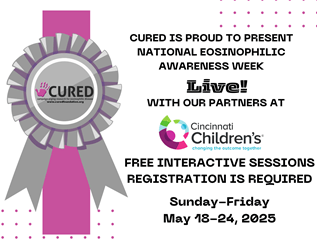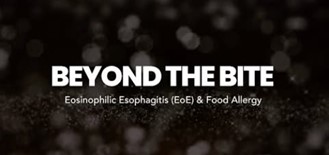EoE a part of Atopic March
The Rothenberg CURED Lab has a long-term collaboration with Dr. Gurjit Hershey focused on understanding the progression and pathogenesis of allergic disease. In this study, using the longitudinal atopic dermatitis cohort, MPAACH, Drs. Hershey and Rothenberg and their colleagues demonstrate that eosinophilic esophagitis (EoE) occurs in 1.5% of the children with atopic dermatitis, representing a ~10-fold enrichment. These findings supporting EoE being part of the “atopic march”. Read about this and other findings below.
Read the preprint article
Significance of Diffuse vs. Localized Esophagitis in EoE
Eosinophilic esophagitis (EoE) clinical trials often require patients to have disease involvement in multiple regions of the esophagus (e.g. distal and proximal biopsies showing EoE). By probing the Consortium of Eosinophilic Gastrointestinal Disease Researchers (CEGIR) database, we examined patient-reported outcome scores for patients who had multi-regional versus single-regional esophageal inflammation. Our study reveals that multi-regional eosinophilic inflammation does not impact symptom scores. These findings will shape enrollment in future clinical studies. It is important to note that for clinical care, examining biopsies from multiple sites in the esophagus regardless of the indication constitutes good clinical practice because it increases the chances of identifying abnormalities microscopically.
Read more about the article
Dr. Richard Taylor III, MD joins the Cincinnati Center for Eosinophilic Disorders
We are excited to announce that Dr. Richard Taylor III, MD has joined our team as an Assistant Professor! Dr. Taylor is a pediatric gastroenterologist with a strong connection to Cincinnati Children’s. He earned his medical degree from the University of Central Florida and completed his pediatric residency at Cincinnati Children’s, where he served as Chief Resident in 2021. He further completed his fellowship in pediatric gastroenterology at our institution, being mentored in clinical care and research by Drs. Bolton, Mukkada and Shoda. Dr. Taylor trained extensively within the Cincinnati Center for Eosinophilic Disorders and is skilled in transnasal endoscopy (TNE), which he will offer at our Liberty Campus. He has led our efforts to understand and describe our extensive and unique expertise in using dupilumab in eosinophilic gastrointestinal diseases, as well as completing an additional research project focused on eosinophilic colitis. He will also see patients at our Burnet Campus and Crestview Hills, Kentucky outpatient clinics and provide endoscopy services at our Burnet campus and soon to be opened Eastgate center. Dr. Taylor brings energy, expertise, and a deep commitment to patient-centered care.
Learn more about Dr. Taylor











